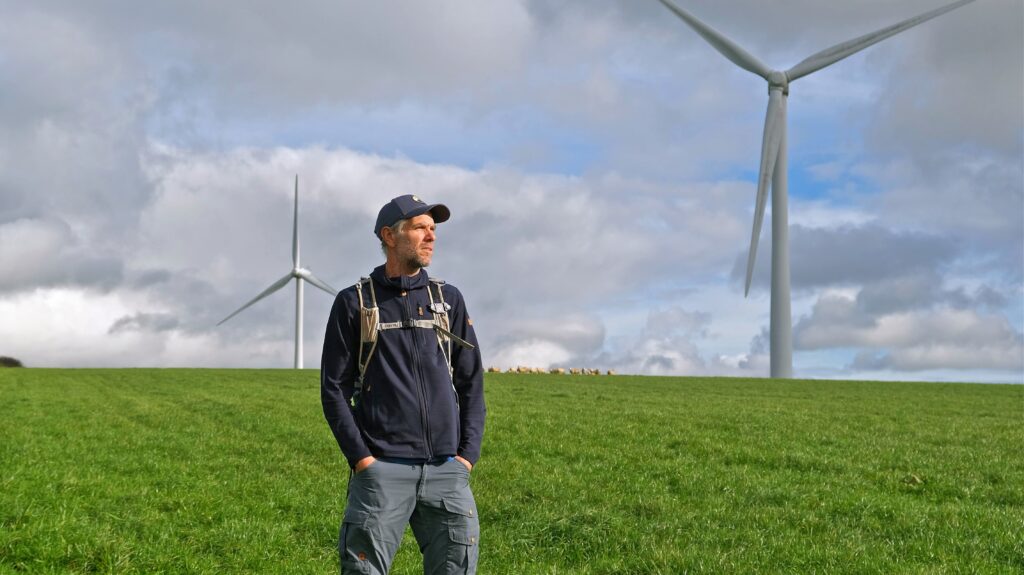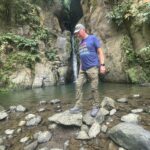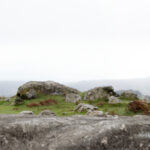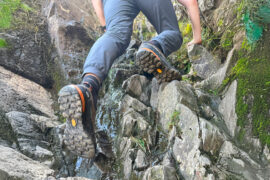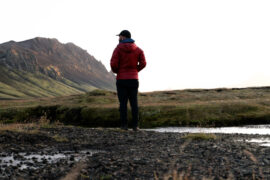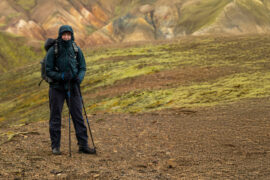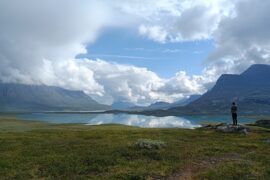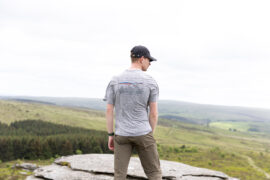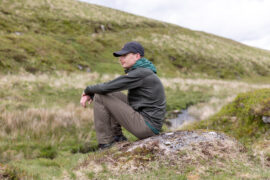Ian our Warehouse Manager ponders on whether such an expensive fleece can really be worth it.
Back in the summer, I was offered a Fjällräven Keb Fleece Hoodie to test and review. It’s an item I’d seen before and loved the look and feel of; but with an RRP of around £200 it is perhaps the most expensive fleece we range and a very considered purchase.
I remember talking with a colleague about it at the time, who questioned (as I had) how a fleece can possibly have such a high price tag when other retailers can sell something that looks very similar and probably just as warm for under £50?
With this in mind, I took it on.
“ by producing on nature’s terms; by developing clothing and gear that lasts for generations; by placing strict standards on ourselves and our suppliers; and by introducing more people to nature and its myriad benefits, we hope to leave our basecamp in better shape than we found it.” – Fjallraven
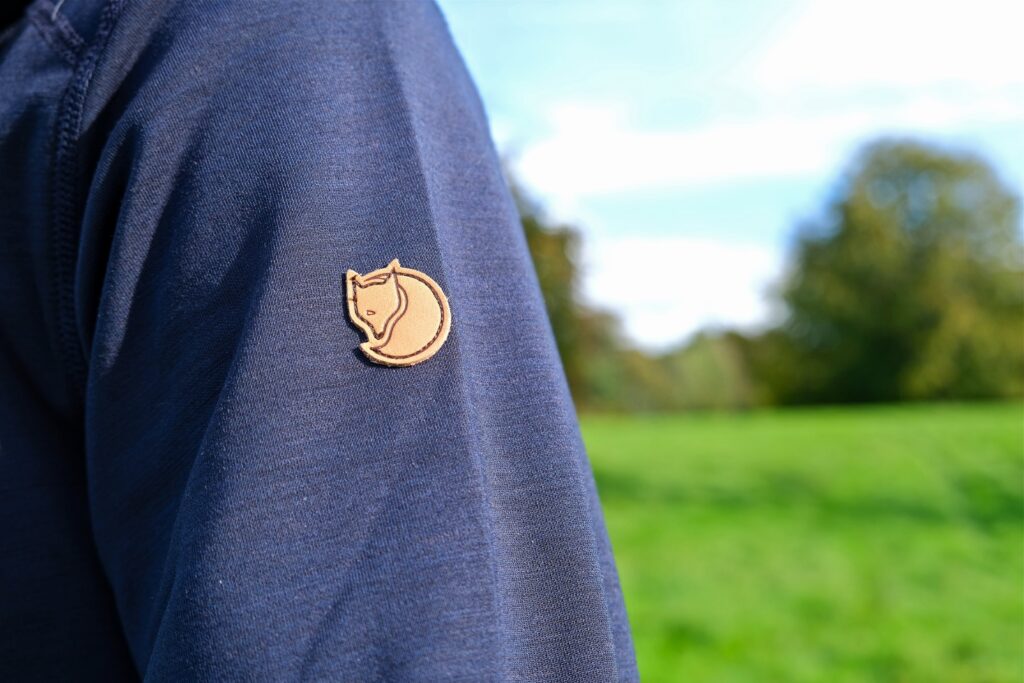
Before discussing the Keb fleece specifically, I feel it’s vital to provide a bit of background to the ethos of Fjallraven as a company, celebrating just how ethically and environmentally conscientious this Swedish brand is in its product design and manufacture.
Most of the top outdoor brands now (quite rightly) make quite considered choices in their production and materials, in order to lessen or help offset their carbon footprint; but few set the bar quite as high as Fjallraven.
In fact, nature is so much at the centre of this company that they have produced a 10 page “Code of Conduct” document to which all elements of their business, including third parties they work with, must strictly conform to. This covers everything from human rights, fair wages, working conditions, anti-corruption, animal welfare, environmental protection and sustainable development to name but a few. They carefully selected materials which not only comply with all of the above but without compromise on performance and durability, producing an end product of the highest possible quality and longest possible lifespan.
The Jacket –
So, the Keb Fleece Hoodie (as its name suggests) is part of Fjallravens Keb family, which represents their technical trekking range. It’s a midweight fleece made of a blend of recycled polyester (80%) and traceable wool (20%), reinforced on the shoulders with colour matching panels of Fjallraven’s highly durable G1000 fabric.
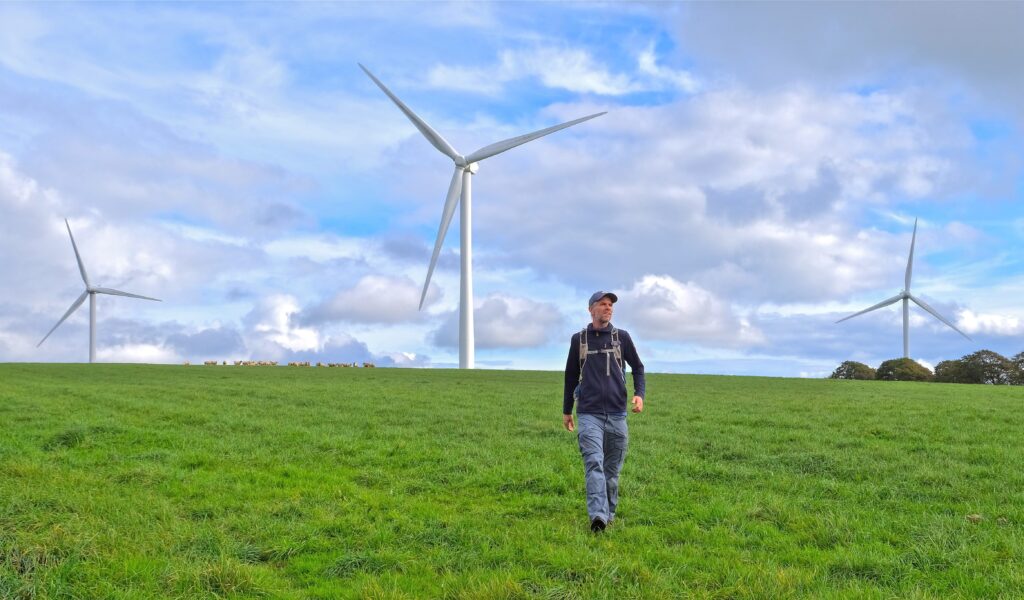
Its design is primarily as a mid layer, with a brushed finish to the inside to help wick moisture through and away. The exterior has a soft smooth finish, minimising catching and friction when you want to put on or remove an outer shell layer in a hurry.
There are 4 pockets; two hand pockets and a chest pocket on the exterior, all with zips beautifully finished with ethically sourced and tanned leather zip pulls bearing the Fjallraven Arctic fox logo. The fourth is a large open pocket on the inside, deep enough to take a map.
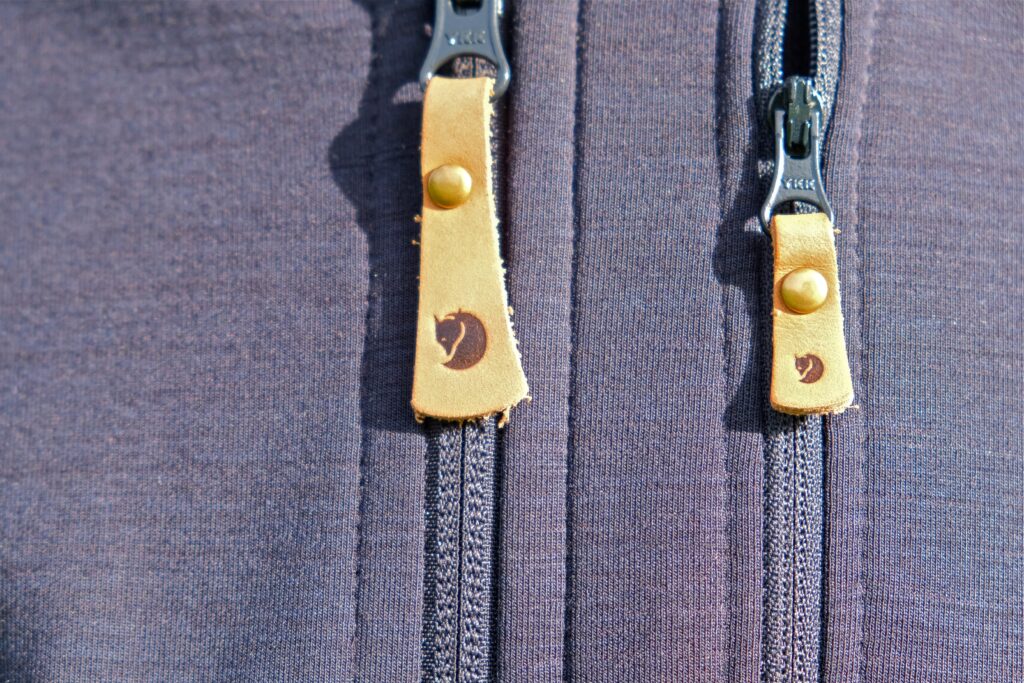
The main zip is two way in order to allow additional ventilation if needed and is finished with the same detailing as the pockets.
Thoughts –
I’m a big fan of the Fjallraven brand anyway so this was always going to be an easy sell. I’ve owned 3 items of their legwear for years, none of which are showing any signs of old age. The construction and durability of their products is unrivaled in my opinion and although only a few months old, I don’t doubt for a moment that the Keb Fleece Hoodie will be any different.
First impressions are very positive. Although it’s not a chunky fleece by any means, the fabric is very dense and with the additional reinforcement on the shoulders it just feels durable. The feel is really good. The brushed finish to the inside feels really soft and instantly warming, just as a fleece should feel. I’ve had no issue with sweat or retained odours when hiking (for which I assume I have the wool to thank).
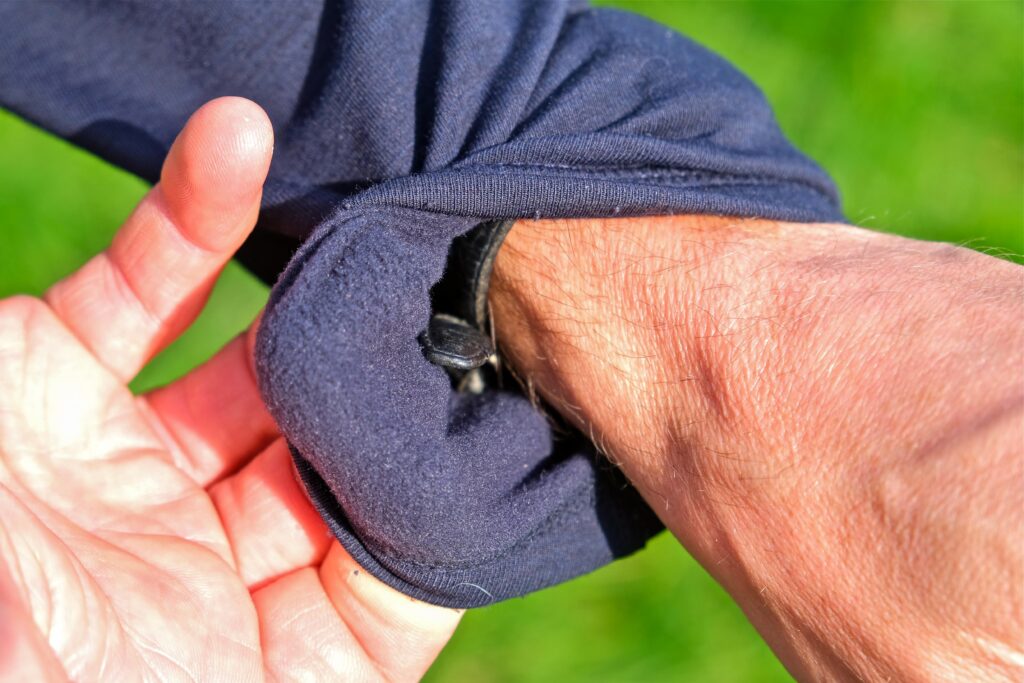
The fit is good, not perfect but I feel that’s more to do with my disproportioned build. As a reasonably lean and quite tall person (6′ 3″) sizing often involves a bit of compromise; usually either a bit short in the arm to get a good fit in the body or vice versa. The jacket I have is a size Medium, providing a good fit in the body and just enough arm length (but only just).
I haven’t really needed to use the hood at all (although I’m more of a hat than a hood person really) but the fit is close with enough stretch to retain position with head movement. As before, the brushed inner is very soft and comfortable against your skin.
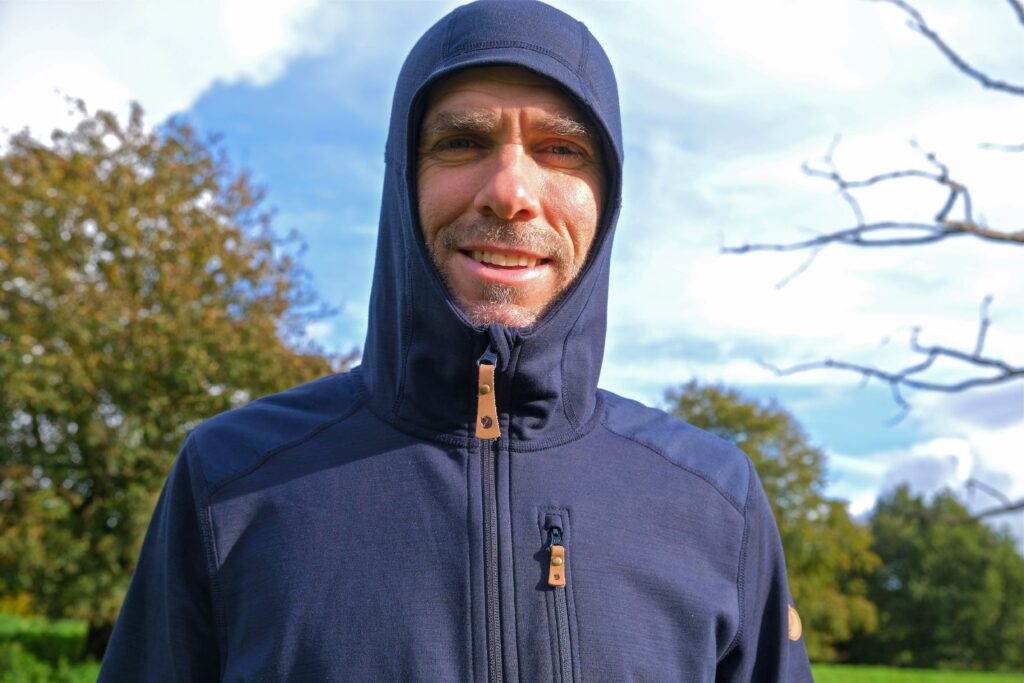
It’s a pretty simple design with features kept to the essentials; but I feel it has everything you need it to. In the beginning when I was deliberating over sizes, I questioned whether it could perhaps benefit from a draw cord around the hem at the bottom, just to give that option to bring it in closer if, like me, you are slightly between sizes. It’s largely won me over but the jury have not quite reached a unanimous verdict.
What I really like about this fleece is how simple it is. It’s quite a technical piece but in no way screams OUTDOORSY. The colour choices are modest and the branding incredibly subtle. Equally at home in the pub or on the mountain!
So, is it worth it? –
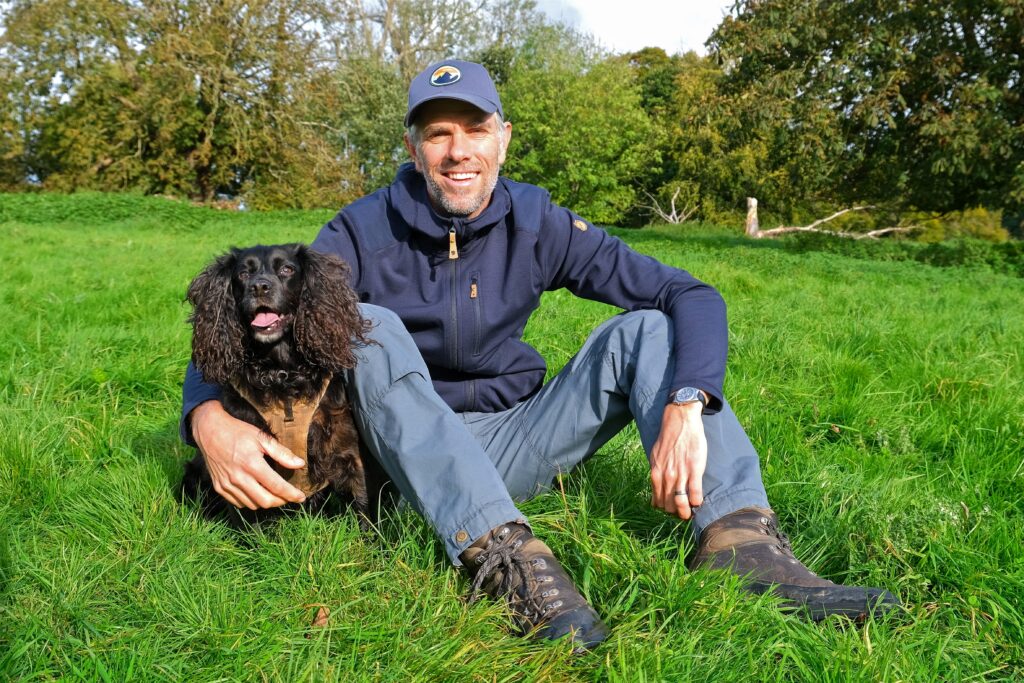
I doubt anyone really sets out shopping for a fleece with quite such a price in mind. Fjallraven go to extraordinary lengths to ensure that what they produce is of the very highest quality but with the lowest possible impact to the environment. Such a conscientious approach in research, design and manufacture is inevitably going to come at a price. Its products are definitely a very considered purchase but I think that’s largely the point. It’s an ethos of making a purchase which lasts rather than compromise in the pursuit of a mass produced bargain. It’s one for those looking to commit to a long term relationship over a seasonal infatuation. It’s sustainability through longevity. The Fjallraven model is I’m sure how we all would like to see our clothing manufacture happen; all of our consumables for that matter. Well, the good news is it can be, but it’ll cost you. So, is it worth it? It really is going to depend on your budget but all things considered, I think so.

